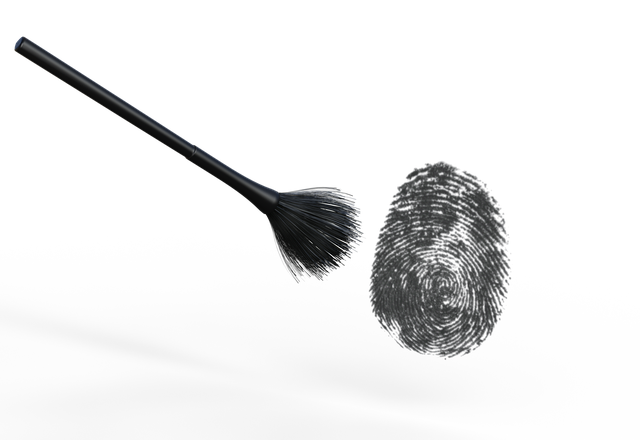
The way in which fingerprints are collected depends on the type of print.
Welcome back, and thanks for joining us here at The Kronzek Firm for our breakdown on how fingerprints are used to tie individuals to specific crime scenes. Having discussed in our previous article the types of fingerprints that people can leave at different locations and how police categorize them, we’re going to move on to talk about the methods used to expose latent prints, and how crime scene techs “collect” them for analysis.
How are fingerprints collected at crime scenes?
Different prints are collected in different ways. In the previous article we discussed the different types of prints, namely patent and latent. Each type is collected for analysis using different methods:
Patent prints:
Patent prints are visible to the naked eye, and so they are collected using a very straightforward method – photography. A crime scene tech will use a very high resolution camera and take close up images of every patent fingerprint found at a crime scene. A forensic measurement scale will be included in each image as a size reference.
Latent prints:
Latent prints, which are either completely invisible or barely detectable to the naked eye, have to be collected using different methods. (After all, you can’t photograph something that cannot be seen.)
- Fingerprint powder: This is one of the most common methods used by law enforcement to reveal and collect latent fingerprints. A fine but granular black powder is lightly dusted onto a non-porous surface containing possible fingerprints. The granules of powder cling to the sweat and oil traces left by fingerprints, making them visible. These dusted impressions are then collected using a strong clear tape, which sticks to the black powder and peels the fingerprint away from the surface where it was left.
- Alternative Light Sources: Because the black dust from fingerprint collection can sometimes contaminate evidence, crime scene investigators (CSIs) are making use of alternative light sources. This would be a laser or LED light source that emits a specific wavelength, or spectrum, of light. This, when combined with certain dye stains, can make fingerprints more visible and easier to photograph.
- Cyanoacrylate: This is sometimes referred to as “fuming” and involved exposing the fingerprint to the fumes of superglue. The vapors adhere to any prints left on a non-porous surface, making them visible to the naked eye in white light.
- Chemical developers: Porous surfaces, like paper, need to be handled differently. To expose latent prints on a piece of paper, police officer’s or CSIs use chemicals like ninhydrin and physical developer, which react with the amino acids and inorganic salts left in the fingerprint. These chemicals either make the print visible in a specific color,, or make them glow, so that they can be photographed
- Other methods: The above mentioned methods are used for collecting fingerprints from porous and nonporous surfaces found at the average crime scene. However, when trying to collect prints from bodies, clothing and other more complex surfaces, crime scene techs have to be even more careful. So the methods they use are very specific. For example, Amido Black is a protein stain that reacts with any protein present. It would be used for developing or enhancing bloody finger impressions on human skin. To expose prints on clothing, crime scene techs use high-tech methods like vacuum metal deposition with gold and zinc. Another method used in Michigan is AccuTrans®, which is a liquid casting compound that can be used to lift powdered latent prints from rough, textured or curved surfaces.
Join us next time, as we discuss who conducts the analysis, and where it’s performed. Until then, if you or a loved one have been accused of a crime in Michigan, call The Kronzek Firm immediately at 866 766 5245. Our highly skilled criminal defense attorneys are experienced in working with our own crime scene forensic consultants to protect the rights of Michigan’s people from false criminal charges and accusations. We can help you too. An attorney is available 24/7 to take your call and discuss your case.